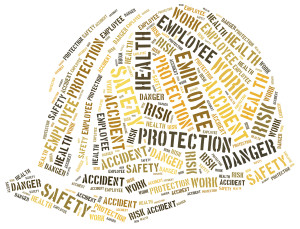A Tale of Two Colleagues: How to Maximize Emotional Safety
I have two colleagues, both of whom I’ve known for about the same amount of time. With one, I’m somewhat guarded, not willing to be completely transparent. But with the other, I’m surprised at how vulnerable and candid I can be.
The question is, why the difference? I know them equally well. Neither has any more or less organizational influence with me. What do they each do that affects my willingness and desire to be open?
One of the most helpful psychologists on this topic is Dr. Stephen Porges of the University of Chicago. Dr. Porges has found that the nervous system is wired to detect whether situations or people are safe. Slight perceived actions from another person will cause human beings to shift into defensive strategies and withdraw from social engagement.
When I analyze and compare my interactions with colleagues (and anyone, for that matter), I notice slight differences in how people operate that I believe may be at the heart of my willingness to trust them:
- Hiding vs. Revealing. While withholding any information can reduce trust, covering our emotions may be the most detrimental to safety. Human beings connect primarily through emotion, so hiding behind a protective façade short-circuits the relationship. This is particularly challenging when the emotion is apparent but not acknowledged, like insecurity masked in bravado.
- Needing vs. Self-Defining. I feel particularly safe around one colleague because I can tell he doesn’t need my approval and he doesn’t need me to be in a good mood. He defines himself and directs his own emotions.
- Justifying vs. Admitting. Say circumstances have been challenging for you—you haven’t gotten enough sleep or support from your teammates. You want to make sure people know. The ego wants so badly to justify itself. Particularly if someone else has a misconception of your intentions or past actions, you want to explain yourself. But when someone admits their shortcomings, with no caveats or defensiveness, it can be so disarming.
- Advising vs. Discovering. Some people always have a solution for my problems. Others don’t care about my problems. The ones who encourage transparency from me are those who are just curious to learn more. They ask questions but don’t presume to have all the answers, and I find myself expanding and deepening my thinking…and our trust.
- Judging vs. Accepting. In a recent situation, I was compared with “most guys” in my situation who would have “responded more appropriately.” Although they can bring good discussion to the surface, criticism and comparison can make me feel less safe. But it feels even riskier when people quietly assume the worst about my intentions and secretly harbor resentment. “I can’t believe he would say ______ and imply that I’m not __________. I’m offended!” People who are thinking these things without saying them directly really scare me.
- Deflecting vs. Engaging. We’re busy and have short attention spans, so it’s no surprise that it’s really hard to give other people sustained attention. Think about how often you’re asked “How are you?” or “How is your work?” and you respond with generally self-protective small talk. We watch and perceive slight actions like eye contact, follow-up questions and empathy to determine whether it’s safe to reveal more.
Because people are risky, we hold back from fully engaging with each other. But sometimes it takes just a slight adjustment to increase someone else’s emotional safety.
Do you see these factors influencing your perceptions of emotional safety? Are there others you’ve found that are important to talk about? Share in the comments to add to the discussion.










Comments are closed here.